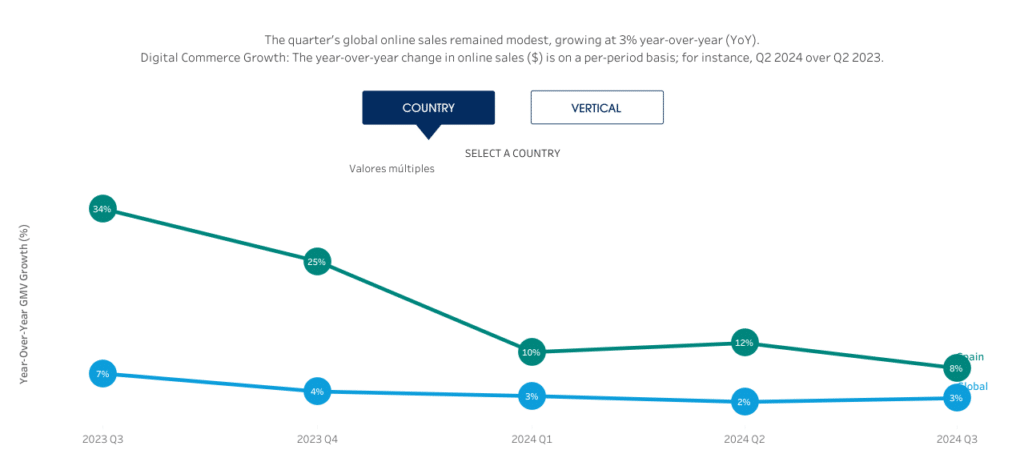Online shopping in Spain continues to increase at an unstoppable rate. According to the latest Salesforce Shopping Index report, internet sales in the country grew by 8% during the third quarter of 2024, well above the global average of 3%. This data places Spain as one of the most dynamic markets in Europe, surpassing growth in countries like Germany (5%) and France (3%).
The Shopping Index, which analyzes the behavior of over 1.5 billion consumers worldwide, reveals a clear preference among Spaniards for making purchases through mobile devices. In this sense, orders made from smartphones grew by 8% in Spain, while the use of desktop computers for these transactions dropped by 6%. Globally, mobile usage also increased, though to a lesser extent (5%), and there was a 1% decrease in desktop usage.

Shopping Cart Abandonment Rate: A Pending Challenge
Despite this surge in mobile purchases, consumers still face difficulties in the payment process from their devices. The Salesforce study highlights that in Spain, the shopping cart abandonment rate on mobile reaches 86%, compared to the global average of 83%. In contrast, on desktop computers, this rate is significantly lower, at 77% in Spain and 76% globally.
This phenomenon, according to experts, may be related to the friction users encounter in mobile payment methods. Brands operating in e-commerce will need to continue improving these platforms to retain customers until the end of the purchasing process.
The Impact of Discounts on Online Sales
The report also shows that discounts are playing a crucial role in online purchases. Despite a 4% increase in global traffic, the average spending per consumer has decreased by 1%. In Spain, the average spending is $62, well below the global average of $106. This reflects the price sensitivity of Spanish consumers, especially in an economic environment marked by uncertainty.
In this context, discounts have been a driving force for sales. In Spain, the average discount applied in online purchases during the third quarter was 12%, while the global average reached 18%. This factor is key to understanding consumer preferences and how it will influence retailers’ strategies in the coming months, especially during the holiday shopping season.

The Role of AI in Future Holiday Shopping
Artificial intelligence is expected to play a crucial role in online sales during the upcoming holiday season. According to Salesforce predictions, it is estimated that 18% of global orders during this season will be influenced by predictive and generative AI, equivalent to $201 billion in sales. Additionally, 53% of surveyed consumers expressed interest in using generative AI to find the perfect gift.
From Stackscale (Grupo Aire), co-founder David Carrero highlights how artificial intelligence is not only dominating the conversation in cloud infrastructure and private cloud solutions, but also in e-commerce, becoming an omnipresent word that will follow us during Black Friday and Christmas.
Prime Day Boosts Sales in Spain
October’s Prime Day had a significant impact on the Spanish market, with an 11% increase in traffic on eCommerce platforms, compared to the global 2%. But the most surprising data was the increase in online purchases in Spain, which rose by 12%, while the global average remained flat.

The categories that stood out during this event in Spain were handbags, with a 28% increase in traffic, followed by food and beverages (17%) and sportswear (13%). In terms of sales, electronics and fashion led with a 36% increase, followed by health and beauty (21%) and handbags (20%).
In terms of discounts, fashion was the most benefited sector, with discounts of up to 27%, 5% higher than the previous year. Electronics and health and beauty products also experienced strong discounts, reaching 20% and 17% respectively.
This growth in online shopping reflects a clear change in consumer habits in Spain, who increasingly opt for the convenience of digital shopping, driven by attractive discounts and the use of advanced technology like artificial intelligence.
Access the full report on Salesforce.

